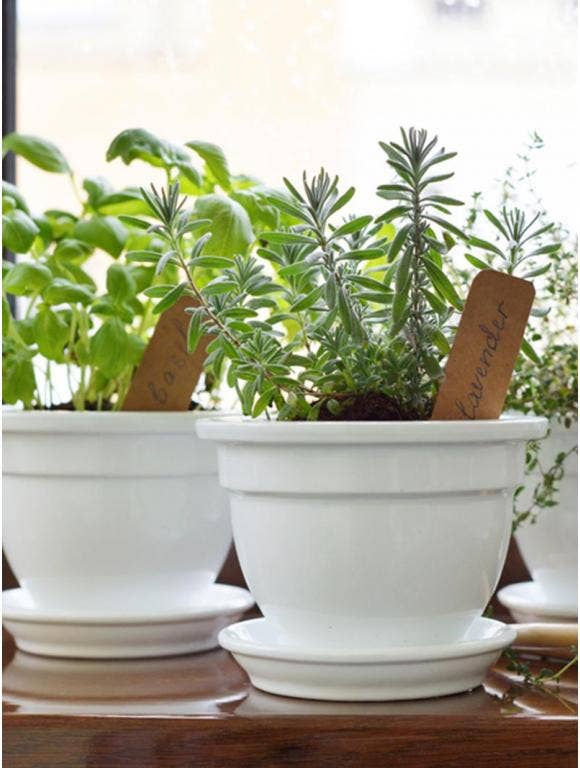
Whether you're short on space or your climate is too cold for winter planting, an indoor garden can help you enjoy your favorite herbs and flowers all year round. Follow these indoor gardening tips to learn what to grow and how to get started.
How to Start a Garden Inside
To get started with indoor gardening, you'll need the right equipment, including suitable containers and a growing medium. Containers should feature proper drainage and allow enough space for roots to grow. Herbs will do best in 8- to 10-inch pots, though you can go larger and plant multiple herbs together if you have the space. Small greens, like looseleaf lettuce and mustard, will do well in 10- to 12-inch pots. If you're growing flowers, container size will depend on the variety.
Opt for a potting mix over soil from your garden, which might contain weeds or bacteria. Garden soil can also become compacted over time, making it challenging for new roots to grow. A growing mix such as garden coir helps with aeration and improves root growth, and you can also supplement with other plant foods and fertilizers.
In addition to the proper container and soil, the third essential element to growing indoors is sunlight. Herbs need a minimum of four hours of direct sunlight daily, and leafy greens need at least six, so placement is key to success. Choose a location like a south-facing window or ledge that gets direct sunlight, or else use plant lights (turned on for 16 hours and off for 8 hours each day). You have a little more wiggle room with flowers, depending on the variety you choose to grow. Some flowers, like 'Candy Box' impatiens,' thrive in full shade, making them ideal as houseplants.
What to Plant Indoors
One of the most vital indoor gardening tips for a successful garden is choosing the right plants. The space and amount of light you have inside may limit your options, but there's still a range of possibilities. Herbs are some of the easiest plants to grow inside and may actually do better indoors, especially during cooler months, providing you with fresh herbs year-round. Basil, chives, dill, mint, oregano, parsley, rosemary and thyme are great herb options for indoor gardens.
Large vegetables, like corn and tomatoes, won't do well inside, but with the right amount of light, you can plant leafy greens, like 'Green Ice' lettuce and mustard; low-growing fruits, like strawberries; and even dwarf varieties of vegetables, like peppers.
Many container-friendly flowers will thrive indoors with partial sun and full shade. Varieties of begonias, calla lilies, geraniums, impatiens and viola are all excellent options that will grow well without full sun and provide a bold splash of color.
Challenges of Indoor Gardening
Maintaining a successful indoor garden is entirely possible. However, you may face a few hurdles to keeping your plants thriving. Lighting is one of the biggest obstacles indoors. If you don't have a sunny window, you can supplement your light source using a grow light. This handy tool ensures your houseplants get enough light to grow and stay healthy.
Space is another major challenge when it comes to planting indoors. If your sunlit space is limited to a small window sill, that doesn't leave much room, unless you consider growing upward. Add height to your window garden by using stands to elevate more plants on top. Another option for expanding your indoor space is a garden cart with a built-in grow light that allows you to grow anywhere inside.
Maintaining a consistent, comfortable climate and temperature for your plants can be tricky when air conditioning and heaters are in play indoors. For cool weather plants, when it comes time to fire up the heater, add a small fan or crack the window to make sure your plants don't overheat. Humidity is another factor: Depending on the plant, you might need more or less humidity. Using humidifiers or dehumidifiers as needed can solve both problems. A small thermostat kept in the area of your indoor garden is the best tool to ensure you're striking the right climate balance for your plants.
You don't need a huge yard or to live in a specific growing zone to enjoy the benefits of gardening. With the right tools and plant selection, you can have a thriving garden right inside your home all year round.
For more indoor gardening tips, check out Burpee's guide to indoor planting.



